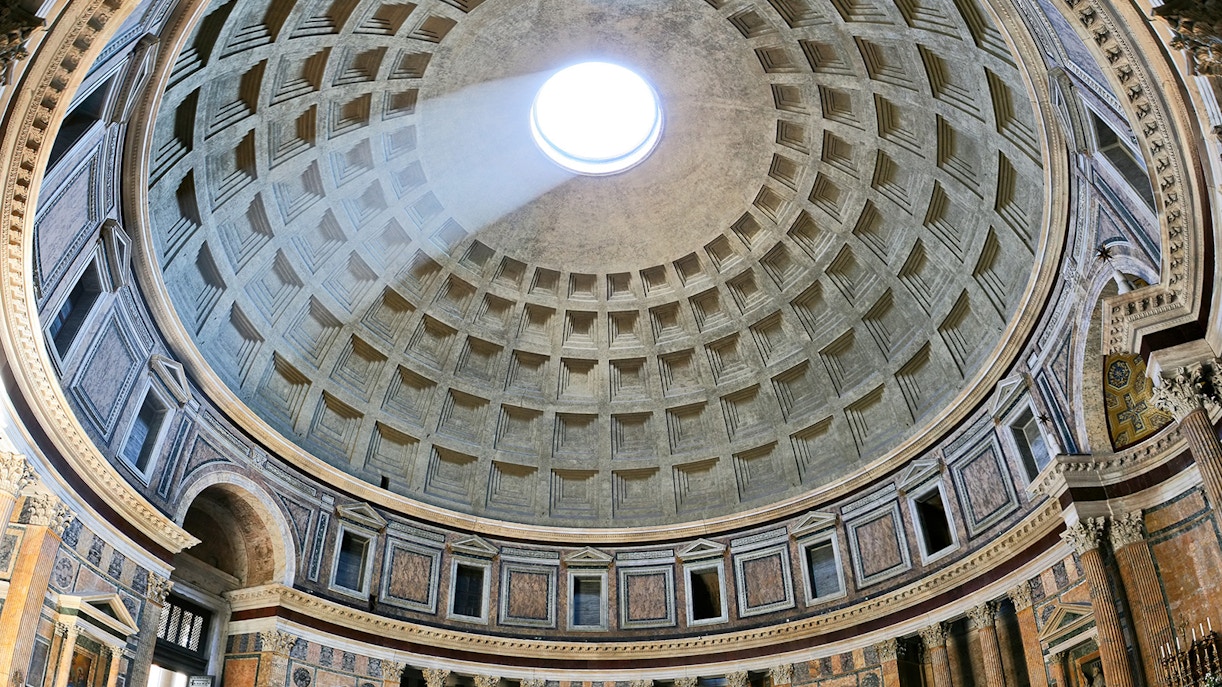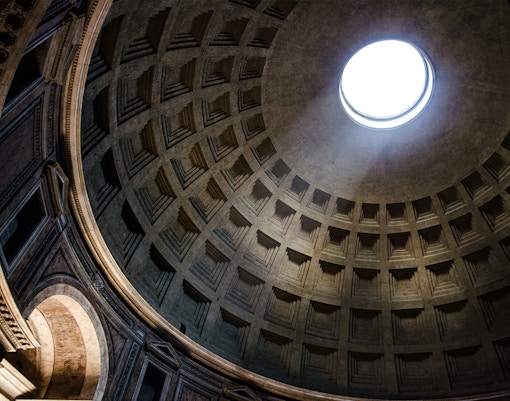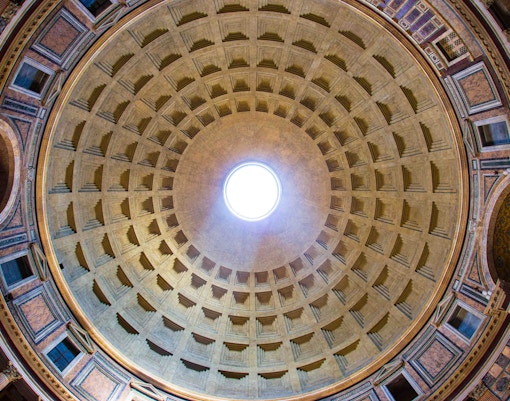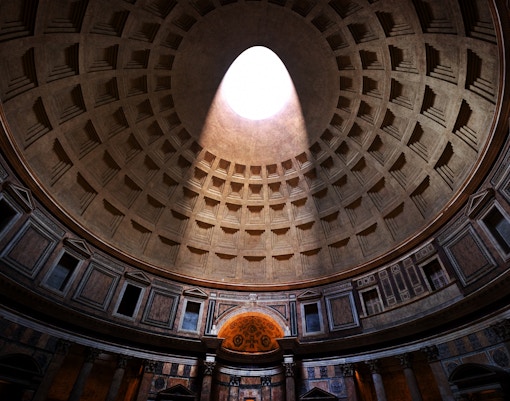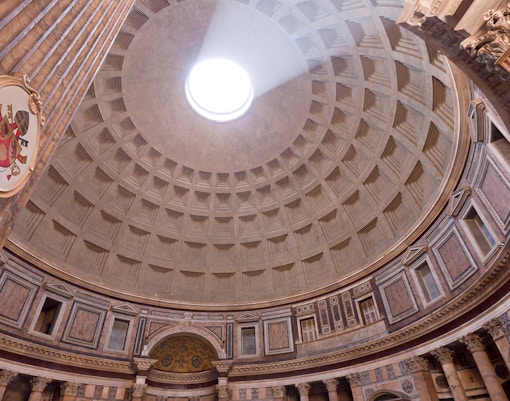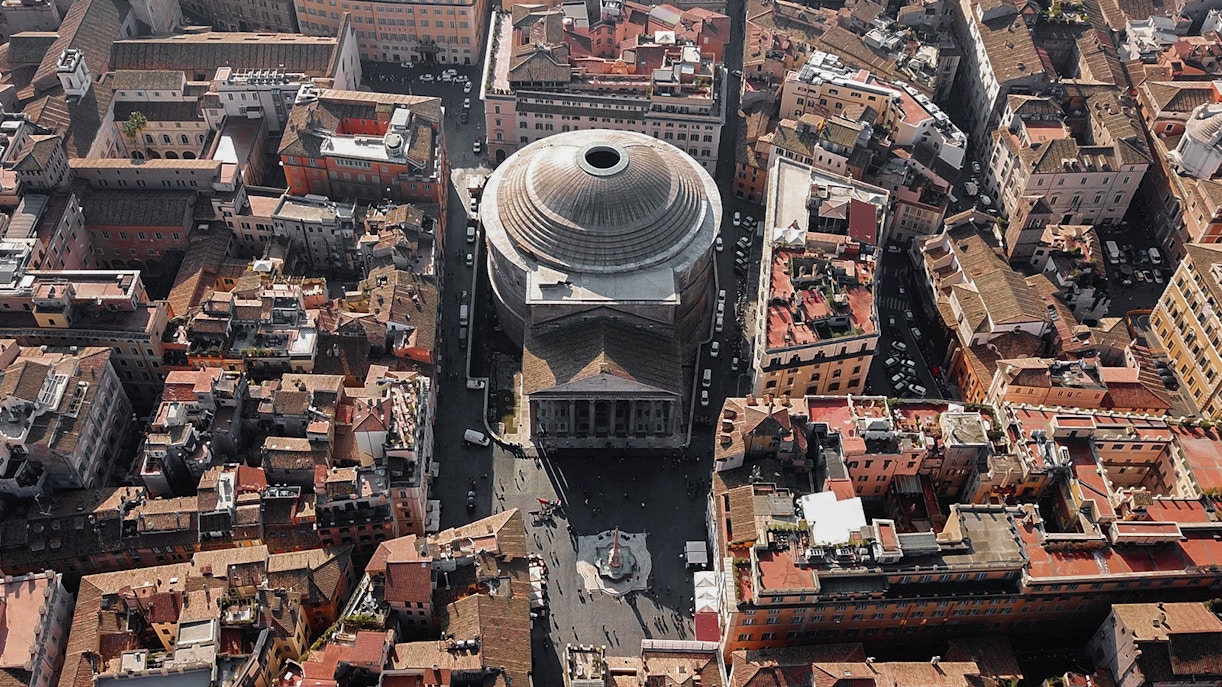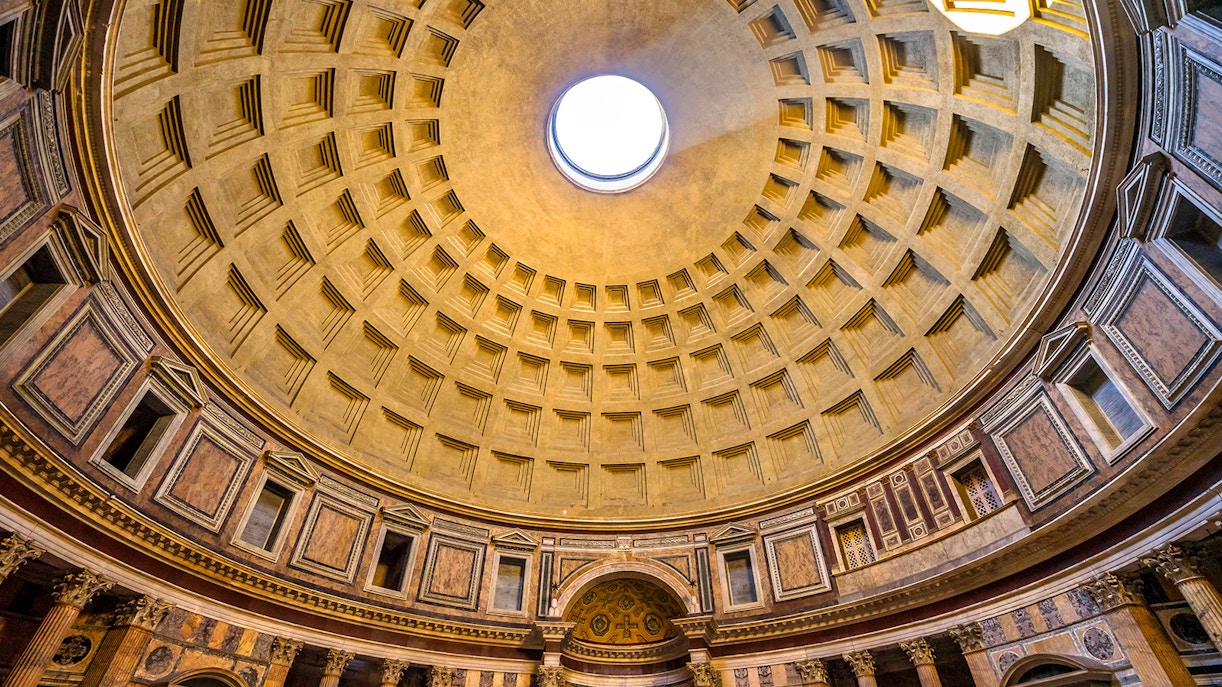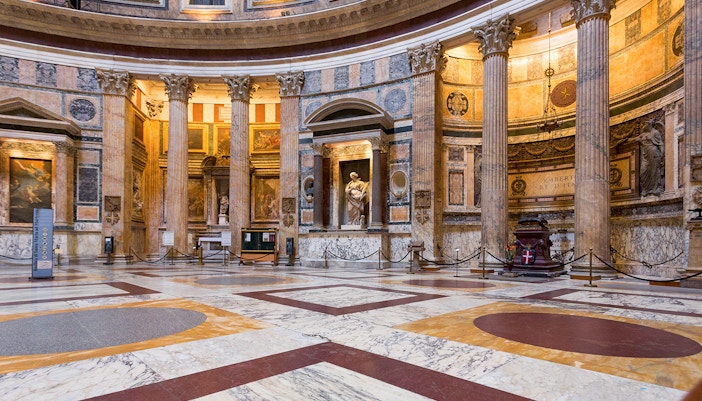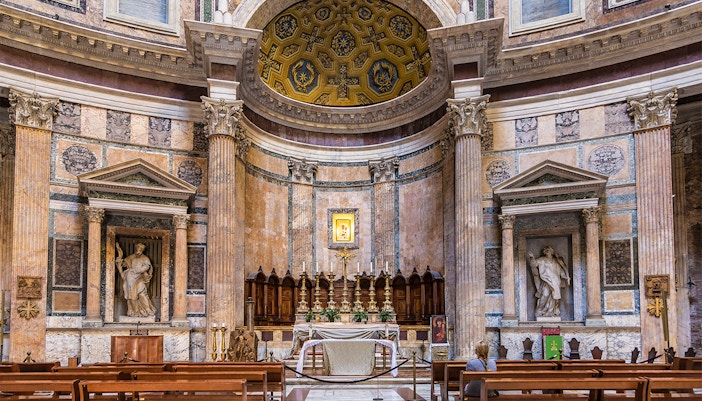- Data deschiderii: Construit inițial în anul 27 î.Hr., reconstruit în anul 126 d.Hr.
- Arhitect: Se crede că arhitectul original a fost Apollodorus din Damasc, dar reconstrucția din 126 d.Hr. este adesea atribuită Împăratului Hadrian.
- Stil arhitectural: Roman, în special doric roman.
- Nume latin: "Oculus" înseamnă "ochi" în latină.
- Funcție: Este principala sursă de lumină naturală din Panteon. De asemenea, acționează ca un cadran solar, aruncând modele de lumină în interior.
- Fenomene speciale: În timpul echinocțiilor, creează spectacole interioare uimitoare.
Detalii/informații despre Panteonul Roma Oculus
